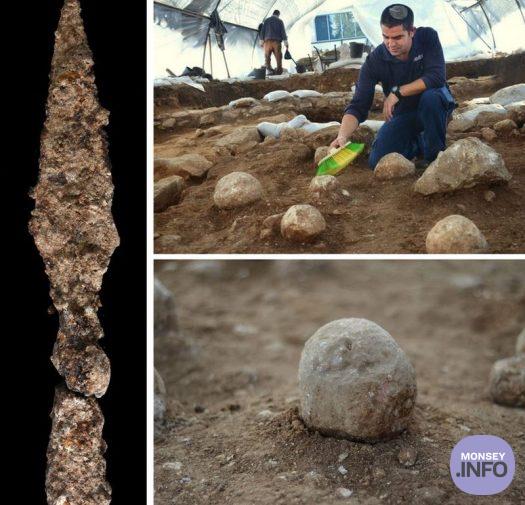
The Location of the Roman Attack That Destroyed the Second Beis Hamikdash
Archaeology is more than digging up antiquities from the ground. It is the story that the remains can tell us, about the place and the people who lived here, and their life in ancient times.
This is a story about ancient warfare that took place in Jerusalem at the time of the Second Temple. Israel Antiquities Authority archaeologist Kfir Arbiv carried out computerized ballistic calculations based on finds retrieved from the 2000-year-old battleground excavated in the Russian compound, adjacent to the Jerusalem Municipality building.
Today, the Fast of 9th Av we present the results that shed light on the mighty Roman army, and the location spots of their attack on Jerusalem in the battle that led to the destruction of the Second Temple.
“The Fast of the 9th Av commemorates the day of the destruction of the Second Temple,” says Israel Antiquities Authority researcher Kfir Arbiv. “The Temple was destroyed in 70 CE, after a four-month siege and an intensive battle led by the Roman general Titus to conquer the city and suppress the revolt initiated by the Jews four years earlier. The Romans had a massive well-trained army, equipped with the best military innovations of their day. It was a ruthless war machine.” The Roman Arsenal exposed to date includes hundreds of different-sized ballista stones that were launched from sophisticated bolt-throwing machines to a distance of 100–400 m, small slingstones used by trained infantry, and catapult machines that launched spearheads for a distance of 150–200 m. Spears, swords and arrowheads, including heavy arrowheads that could penetrate armor were retrieved in the excavations.
According to Arbiv, “With the help of the computer, I recorded the location spot of all the ballista and taking into account the local topography and the location of the Second Temple-period city fortification walls, I made ballistic calculations, including the launching angle, and the throwing distance of the stones.”
According to Eli Eskosido, Director of the Israel Antiquities Authority: “The physical evidence of the huge resources employed by the Roman army in Jerusalem, reflect the extremely harsh battles that eventually led to the destruction of the Second Temple. Notwithstanding the internal factions and the impossible odds, a small group of Jewish defenders withheld the Romans for a few months until the tragic destruction of the city. The use of up-to-date research methods reveal more and more on the fascinating history of Jerusalem.”









